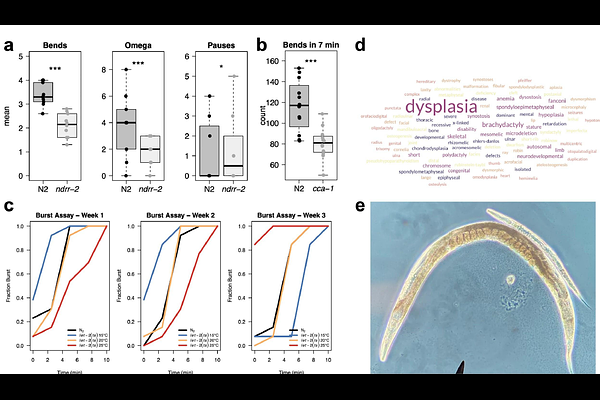Modeling human phenotypes in the nematode C. elegans during an undergraduate developmental biology course

Modeling human phenotypes in the nematode C. elegans during an undergraduate developmental biology course
The Augsburg BIO474 Consortium, ; Aburaide, S.; Ahmed, S.; Chamberlain, M.; Deleon, Y.; Elewa, A.; Millan, L.; Hookom, A.; Juen, E.; Katasi, D.; Lee, B.; Meyer, S.; Shaw, M.; Smith, D.; Vassallo, A.; Wangmo, T.; Wolfson, D.; Xiong, P.; Yaeger, L.
AbstractCaenorhabditis elegans is a widely used model organism in biomedical research due to its genetic tractability, short life cycle, and conservation of many developmental processes with humans. In this study, undergraduate students conducted nine independent experiments during a Developmental Biology course to model human developmental phenotypes using C. elegans. Each group selected a human phenotype of interest, identified a gene associated with the phenotype, and then determined the orthologous or homologous gene in C. elegans. By obtaining mutants and designing phenotypic assays, students investigated whether the worm models could recapitulate aspects of the human condition. This collective work highlights both the potential and limitations of C. elegans as a model for human phenotypic variation and disease and demonstrates the value of undergraduate inquiry as a catalyst for scientific engagement and research-based learning.